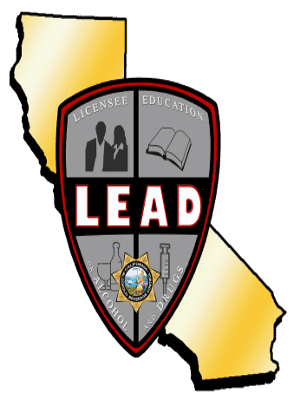Shoulder Tap Program
The Decoy Shoulder Tap Program is an enforcement program that ABC and local law enforcement agencies use to detect and deter shoulder tap activity.
When the California Supreme Court ruled in 1994 that minor decoys could be used by law enforcement to check whether stores were selling alcohol to minors (persons under age 21), the violation rate was nearly 50 percent. In some cities, almost one out of every two stores failed to check a minor’s age and sold them alcohol. By 1997 the violation rate had dramatically decreased in those cities that used the Minor Decoy Program on a regular basis. Minors then turned to the “shoulder tap” method of getting alcohol by standing outside of a liquor store, market or gas station and asking adults to buy them alcohol
The Decoy Shoulder Tap Program is an enforcement program that ABC and local law enforcement agencies use to detect and deter shoulder tap activity. During the program, a minor decoy, under the direct supervision of law enforcement officers, solicits adults outside ABC licensed stores to buy the minor decoy alcohol. Any person seen furnishing alcohol to the minor decoy is arrested (either cited or booked) for furnishing alcohol to a minor (a violation of Section 25658(a) Business and Professions Code).
Goals and Objectives
The goals of the program are to:
- Reduce underage consumption of, and access to, alcohol by deterring adults from furnishing to them outside of licensed premises
- Expand the involvement of local law enforcement in enforcing underage drinking laws
- Raise public awareness about the problem.
Program objectives are to:
- Provide grants to local law enforcement agencies to run the program
- Develop a public awareness campaign
- Target communities for grants that have a high incidence of alcohol-related traffic crashes and injuries involving those under age 21.
To achieve its objectives, the Decoy Shoulder Tap Program relies on the sworn staff members of ABC and the local law enforcement agency.
Program Components
Identify Locations of Activity
Officers collect and review complaints and information provided by citizens, parents, school officials, patrol/campus police officers, community groups, and special event organizers who cater to high school age students. Officers review all data and evidence to help plan the program.
Gain Program Support
In addition to needing support from the community as described above, the program needs strong support by the local prosecutor. Therefore, law enforcement agencies are encouraged to discuss the benefits of the program with their city attorney or county district attorney.
Coordinate the Investigation
The Decoy Shoulder Tap Program initially can be conducted as a joint operation between ABC and the local law enforcement agency. After the initial training by ABC, the program is normally used by the local law enforcement agency.
Media Involvement
One of the most effective uses of the media is to publicize enforcement. Therefore, a press release announcing the program and its goals and objectives is issued to the local news media. Since many adults are not aware of the seriousness of the offense, the publicity of those arrested sends a strong message to those who may be inclined to assist a minor in getting alcohol.
Decoy Selection
Selection of the minor decoy is critical. Desirable qualifications include being: under 20 years of age (and appearing that age); truthful; willing to work undercover, wear a radio transmitter and have their conversations recorded; comfortable making a face-to-face identification of the suspect after the violation and to have their photograph taken with the suspect; able to prepare a written report; willing to testify in court; and willing to undergo media attention.
Results and Impacts
Those law enforcement agencies that have used the Decoy Shoulder Tap Program have had significant results.
Quantitative Measures
The program’s success can be measured quantitatively by the number of persons who furnished over those who did not.
Further quantitative measures include the number of arrests; the number of suspects booked versus released on misdemeanor notices to appear; and the ages of the arrested suspects.
For current quantitative measures contact the ABC Public Information Office.
Qualitative Measures
Qualitative measures include declarations of satisfaction from licensees, local law enforcement officers, and community members. The program has also strengthened the working relationship between ABC and local community leaders, law enforcement agencies and alcohol industry members.
Funding
Local law enforcement agencies can receive Shoulder Tap Decoy Grants from the Department of Alcoholic Beverage Control (ABC) some funded by the California Office of Traffic Safety (OTS) through the National Highway Traffic Safety Administration (NHTSA).
Contact
Additional information may be obtained by contacting:
Alcoholic Beverage Control
3927 Lennane Drive, Suite 100
Sacramento, CA 95834
Email us at headquarters@abc.ca.gov
Call (916) 419-2500



